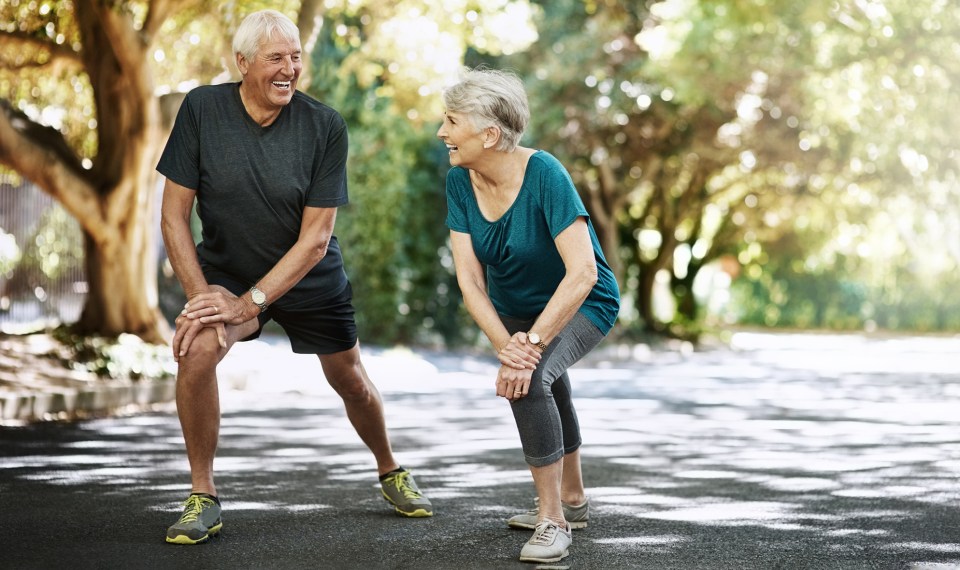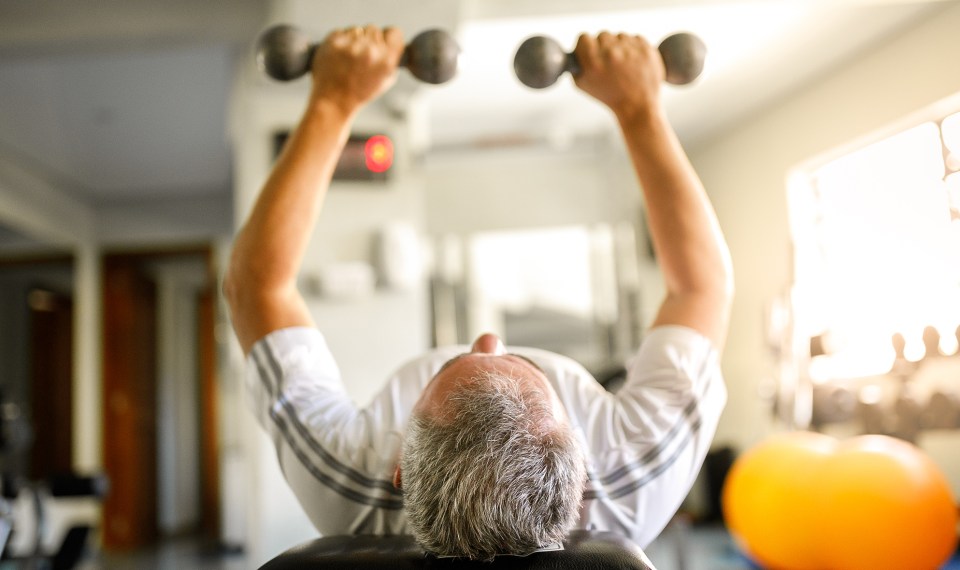It affects just about every movement you make, but range of motion is something most give little thought to—that is, until we begin to lose it.
As you age, it’s inevitable that you will lose some range of motion—or the extent you can move a joint in one direction or another—but there are ways to minimize the loss, said Jason Jackson, a physical therapist at Encompass Health Rehabilitation Hospital of Pearland in Texas.
“It’s a natural part of the aging process to have changes in movement,” he said. “Our muscles just aren’t as pliable the older we get. To some degree this is normal. The more active you are the better, though. It’s one of those use it or lose it type things.”
Range of Motion Vs. Flexibility
Range of motion, or ROM, and flexibility are both important to movement, but there are differences. What are they?
- Range of motion is defined as the ability to move a joint in different directions
- Flexibility is the extent you can elongate a muscle, or supporting tissues such as tendons and ligaments
While different, they support one another, Jackson said.
“They are the same but different and equally important,” he added. “As a therapist, I’m looking at function more than anything else. To be able to do the things you want to do, you have to have sufficient flexibility and range of motion to get into the positions you want to get into.”
For example, Jackson said if you are reaching down to the floor to pick something up you have to have flexibility in the muscles in the back of your legs known as the hamstrings. To reach up to a top shelf, you have to have sufficient range of motion in your shoulder joints to extend your arms overhead.
Why Does ROM Change as You Age?
There are a variety of reasons your range of motion decreases as you get older, which could include arthritis and pain, but the most prominent one is inactivity.
You may be retired and home more, which often leads to less activity and prolonged sitting. This leads to muscle tightness, which can limit flexibility and movement.
Jackson said simple exercises and stretches can go a long way in helping you maintain your range of motion as you get older. However, many older adults are reluctant to start new activities.
“The biggest thing I find is when people get a little older, they start self-limiting themselves and think they’re too old to do this,” he said. “They are sitting a lot more, which causes you to lose flexibility, and it causes tightness in the hip flexors. Just getting on your feet and walking around occasionally can help.”
Simple Exercises and Activities to Improve Range of Motion
The best way to improve your range of motion is to keep moving. Any activity can help. It doesn’t have to be a high intensity workout, and you don’t have to be an athlete; you just need some sort of daily activity that gets you moving. Jackson recommends the following to get started:
- Get some tummy time. This is Jackson’s No. 1 recommendation. While it doesn’t sound like much, he said it’s a great way to relieve tightness from prolonged sitting. Once in the position, you can add some leg lifts and/or press ups with your arms, but it’s not necessary. Jackson said just five to 10 minutes a day on your stomach can help with muscle tightness and flexibility, thus improving your range of motion.
- Find something you enjoy. You don’t have to find a competitive sport or workout, just find something you like that gets you moving. It could be working in your garden or walking—anything that gets you up. If group activities are something you enjoy, find a Sliver Sneakers program near you or maybe a tai chi class, both will get you up and moving. Group activities also allow you to stay social as you age, and being a part of a group helps hold you accountable, Jackson added.
- Don’t forget to stretch—but not too much. Any time is a good time to stretch, according to Jackson, but be careful not to do it too aggressively. This can lead to injury. Active stretches—when you actively hold a stretch at the end of your ROM for 10-15 seconds then relax and repeat—are more beneficial than static stretches, where a person passively holds a stretch using a strap or tool for longer times. Static stretches can lead to decreased nervous system activation, reducing strength and joint stability, which could lead to injury.
Activity can’t ensure that you won’t lose some range of motion as you get older, but it can slow the process and keep you moving.
“You just need to get up and get moving,” Jackson said. “Some of us therapists like to say, ‘motion is lotion.’ Sitting in one spot for too long is not good for anything. The better your range of motion, the better your resiliency is going to be.”
The content of this site is for informational purposes only and should not be taken as professional medical advice. Always seek the advice of your physician or other qualified healthcare provider with any questions you may have regarding any medical conditions or treatments.



